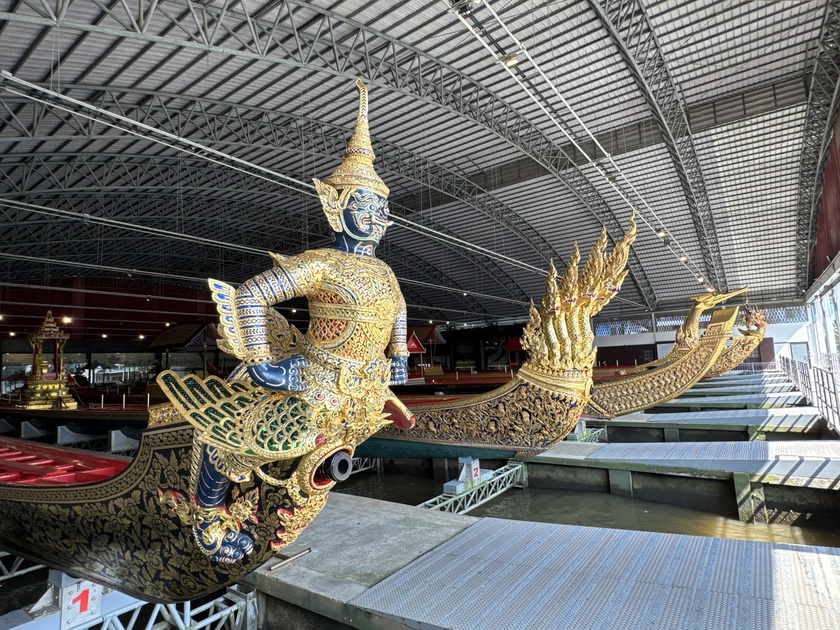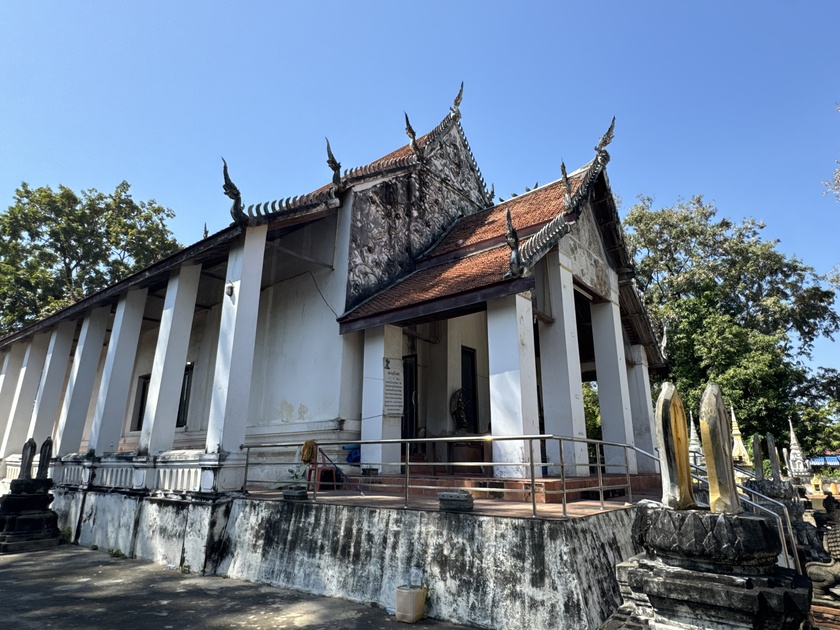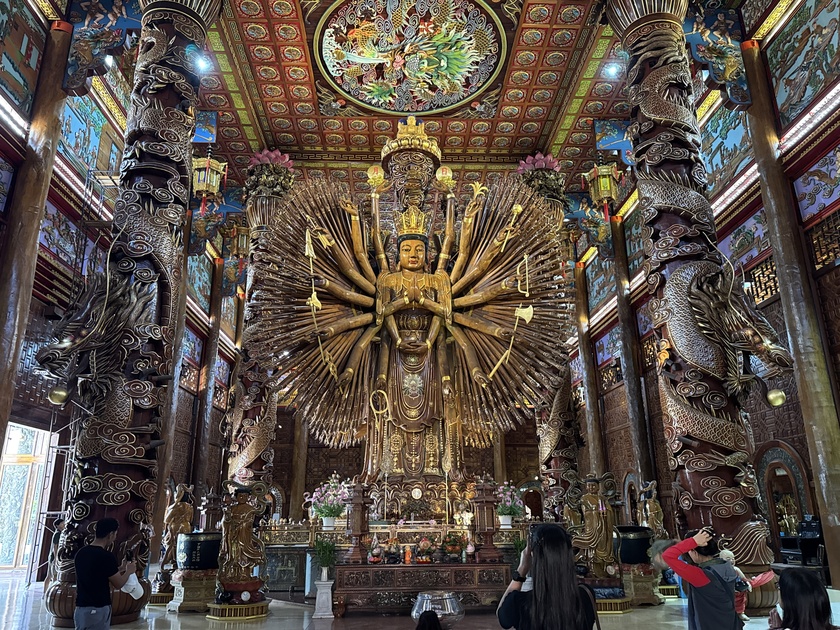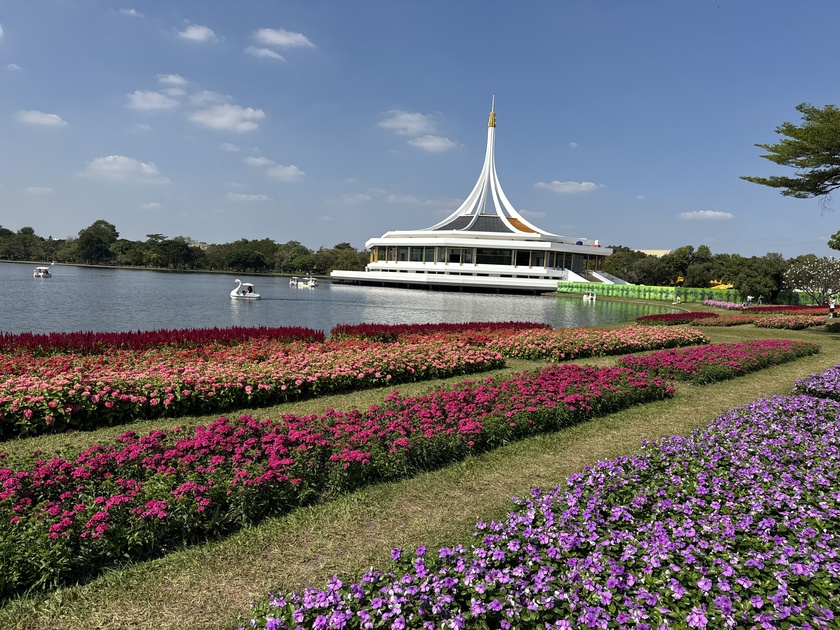The Royal Barges Museum houses eight of the 52 historic boats that form a procession on the water during very important official ceremonies. Their appearance on the water is now extremely rare, only 16 times in the last 65 years. They are all made of teak, beautifully carved and decorated. For lovers of Thai art and history, they are a must-see.
In the past, the Chao Phraya River and related canals were the main communication route of Bangkok, including for the royal family, who had a large fleet of boats. During the Burmese attack on Ayutthaya, all the kingdom’s boats were destroyed in a fire. King Rama I had new boats built resembling those that had been lost, but this time he decided that they would be used only for ceremonial purposes, including the Katin ceremony, which was held in October or November of each year and in which the royal family would sail down the river followed by a procession of boats.
During the civil and military governments that followed the 1932 coup, many of ...
Wat Nang Kui วัดนางกุย
Wat Nang Kui or the Monastery of the Lady named Kui is an active temple located
off the city island in the southern area. The monastery is situated along the Chao Phraya River. To its west side lies Wat Khun Phrom and to its south Wat Mai Bang Kaja.
The monastery was built in 1587, a few years after the first fall of Ayutthaya. The construction was sponsored by a wealthy woman called Lady Kui, thus the name of the temple. After the second fall of Ayutthaya the monastery was left empty and neglected until in the Bangkok period during the Reign of King Rama III, the monastery was renovated.
The temple is actually known for its sandstone Buddha image, Mae Takhian Thong and Luang Pho Yim statue.
Historical data about the monastery is unknown.
From the temple you have nearly a straight view on Pom Phet or the Diamond Fort. It is assumed to have been occupied by the Burmese army in the last battle for Ayutthaya in 1767.
Vihara of Mae Takhian Thong
The vihara of Mae ...
Wat Metta Dharma Bodhiyan (Wat Mettatham Phothiyan) Kanchanaburi Thailand
Due to its amazing 12 meter tall Guan Yin Bodhisattva statues carved in teak wood, this fairly recent temple quickly became the most famous Chinese temple in Kanchanaburi.
The covered courtyard which welcomes you does not suggest what you are going to discover inside: a hall with all the partitions and ceilings in carved teak wood. In the middle of which enthroned, back to back, are the 4 statues of the chinse goddess with 18 arms and a thousand smaller arms with a thousand eyes.
In the peripheral corridors, dozens of unique statues are also made of carved wood. Wat Mettatham Photiyan is set to expand to accommodate even more statues. Hundreds more are already stored to the right of the main hall and are waiting to be installed in the new temple buildings.
In addition to one of the most amazing wooden statues you will ever see the temple is currently building a 165 meter tall, with a base of 108 meter, Buddha Statue. ...
One of the most delightful flower festivals in Thailand, the Suanluang Rama IX Flower Festival is taking place again this year from 1-10 December, 2024. In addition to countless flowers the park hosts a floating market offering trafitional foods and crafts in cooperation with the TAT.
Suan Luang Rama IX สวนหลวง ร.๙, also referred to as King Rama IX Park, is a public park in Bangkok's Prawet District. With an area of 500 rai (200 acres), it is the largest park in the city.
The park was built to celebrate King Bhumibol Adulyadej's sixtieth birthday in 1987, and was opened by the King on 1 December that year. It features extensive botanical gardens, a lake, and a pavilion housing exhibits in honor of the King.
It is a beautiful area and a great break from the hustle and bustle of the city. The park is a great green spot to enjoy the wildlife and nature of the tropics. Countless flowers and trees are there to be photographed.
Suan Luang Rama IX Flower Festival 2025 - ...




















































